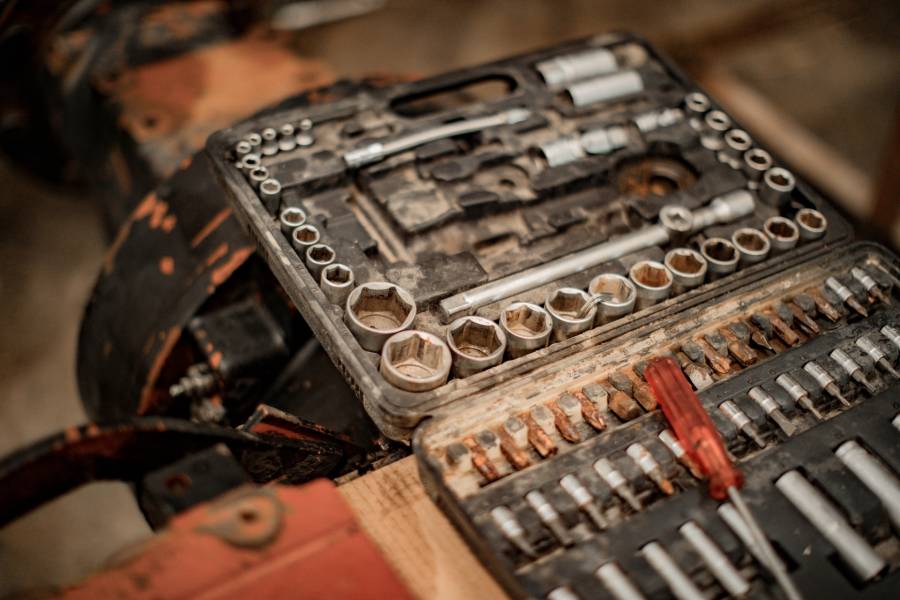Quick Navigation
Has your vehicle broken down suddenly, or are you having trouble starting your car? Chances are, your vehicle’s ignition coil connector clip is broken.
If you have no idea how to fix it, this article is here to help. So please keep reading to find the basics of ignition coil connectors and how to replace them.

Symptoms Of Faulty Ignition Coil Connector Clip
Additionally, how do you know if an ignition coil connector clip is faulty? The following are some of the most prevalent signs of a faulty ignition coil connector clip:
- Backfiring
- Inadequate fuel economy
- Misfiring Engine
- Stalling of the vehicle
- Engine jerks, idling is rough, and power is low
- DTC Code / Check Engine Light On
- Difficulty starting the engine
- Coil type CNP
If you are noticing one or more of these symptoms and suspect that the ignition coil connector clips are broken, follow the steps below to replace them.
Replacing Ignition Coil Connector Clip
Follow this guide to replace the ignition coil connector clip.
Things You Will Need
- A precision screwdriver (1.8mm) or anything with a solid/thin tip is required.
- Replacement connectors.
- Terminal tool.
Steps To Follow
Follow these steps to replace your ignition coils connector clips.
Get The Old Connectors Off
- Generally, people push too hard to release the connectors, and they snap off. What you need to do instead is push down on it and bring it in front of the vehicle, and it will slide off. When you push down on the connector, the tab inside of it gets pushed and slides off the ignition to allow you to pull it off quickly.
- You can also take your screwdriver and slide it inside the coil connector. You can then pull the tab upwards and slide the connector off. However, this is easier said than done.
- You can cut the top portion off with a knife if all else fails. As you would be replacing the connector anyway, damaging it won’t be a problem. However, be careful not to damage anything else in the process!
- The important thing is that you need to disconnect all plugs to get the connector off. Then, you would need to remove the screws to get the shielding off to expose the wires.
Install The New Wires And Connectors
- After removing the coil harness cover, you can proceed with the wiring.
- The first thing you need to do to replace the connector is to remove the lock ring inside–this would be a colored band inside the connector. Pop the lock ring out and slide it out of place.
- Now, take a picture of the colored wires to know exactly where each is placed. They are also numbered.
- Slide the terminal tool inside and pull the wire out. The terminal tool helps unlock the tabs inside.
- Now, put the new wire in and latch it into place. You will hear a click once the wire is correctly latched. Repeat this for all of the wires.
- Once you’ve replaced all the wires, you need to put the lock ring back in place. If your wires aren’t latched properly, the lock ring won’t sit in its place either.
- Tug at your wires to see if they are firmly in place, and you’ve installed your wires!
What Can Cause Failures In Ignition Coil Connector Clip?
To avoid faulty ignition coil connectors, you need to understand why they get damaged in the first place.
Ignition coils connector clips are rugged and dependable, but they can break down for several reasons.
High temperature and vibration can cause shorts or openings in the secondary windings by damaging the coil’s windings and shielding.
The most common reason for ignition coil failure is excessive voltage caused by faulty spark plugs and spark wires.
The output voltage of the ignition coil can grow to the point that it fires through the coil’s internal insulation, resulting in a spark if a plug wire or spark plug is open or has significant resistance.

Many coils’ insulation can be destroyed if the output surpasses 30000 volts.
When this occurs, the coil’s voltage level may decrease, causing ignition malfunction when the car is operating.
The coil can stop producing any voltage altogether, prohibiting the vehicle from starting or operating.
The coil is defective and has to be changed if it has a voltage level at its positive pole and is switched on or off by the ignition unit but does not produce a spark.
How To Tell If The Ignition Coil Connector Clip Is Broken?
Your mechanic will first check for fault codes in the vehicle computer.
The trouble code may reveal which cylinder malfunctioned or which coil has been damaged.
The code P0301, for instance, indicates that cylinder number one is misfiring.
Ignition Coil “A” Circuit Primary/Secondary Malfunction is the code P0351 (cylinder 1).
After that, a service manual technique for inspecting an ignition coil should be followed.
The resistance between certain ignition coil connections is usually measured during an ignition coil inspection.
The ignition coil must always be replaced if the resistance is out of specification.
Mechanics may replace a suspected bad ignition coil with a known one from a new cylinder to observe if the misfiring goes with the coil or continues in the same cylinder to identify a malfunctioning ignition coil.
For example, a mechanic might replace the cylinder two and cylinder three activation coils and start the engine briefly if the code P0302 (cylinder two misfires) appears.
The ignition coil previously at cylinder number 2 is bad if the problem code changes from P0302 to P0303 (cylinder three misfires).
Ignition coils should also be changed if they have fractures, arcing, or other issues that could cause them to short out.
Safety Precautions
An ignition coil generates a dangerously high voltage that is harmful to your body.
Follow the safety precautions stated in your car’s service manual whenever dealing with ignition components.
Disconnecting the negative battery wire is the first step in checking or changing an ignition coil.
Tips For Replacing Ignition Coil Connector Clip Effectively
Here are a few tips for replacing ignition coil connector clips to ensure the most effective replacement possible:
- Coils must not have visible damage because this can cause premature failure.
- Please don’t remove the boot from its coil.
- Don’t scratch off the coil housings.
- Be careful not to strike the parts of the ignition system with your tools.
- Be careful not to permit any sprayed materials on the electrical connectors.
- Don’t force the engine wire mating connector in the coil connectors.
A Few Things To Consider In Ignition Coil Connector Clips Replacement
These are the possible side effects of bad ignition coil replacement:
- If you disassemble the boot from its coil, it can lead to misplacing the suppressor. It ultimately results in engine misfires.
- If the coil body gets unintentionally scratched, it can result in a cracked HV tower and coil failure.
- Be careful not to strike the ignition with your tools, or it could lead to system malfunction and failure.
- Seat the boot properly, or it can result in an engine misfire.
- Using damaged coils can cause premature failure in the engine and may result in expensive repair work.
Conclusion
This article gave insightful details regarding your vehicle’s ignition coils and how to replace them when they get damaged.
A stepwise guide is given in the article to help you replace the ignition connector coil clip.
However, if you cannot replace it on your own or have confusion regarding your particular situation, feel free to contact a reliable mechanic in your area.

Patrick started his love affair with cars in his childhood. Over the years, he claims a sturdy hold on his driving skills, along with a thorough understanding of cars. We can expect some interesting, holistic, and pleasurable blogs with his flair for writing and his love for cars.
Being a car enthusiast, Patrick has experience comprising of two decades in which he has ridden some of the meanest and strongest machines in the automotive industry. His previous avatars include an automotive professional, photographer, and journalist, and you will certainly experience the roundness of experience in his piece on this site.
In his second decade of reviewing cars and analyzing tools, Patrick is all set to give you convincing, reliable, and the latest information regarding what’s happening in the automotive industry. Currently, he owns a BMW Z3 but cannot get his eyes off Aston Martin DB5. He is a car enthusiast; he loves cooking and listening to music, especially jazz. Here are some of the pieces written by our ace author.





![Audi Drive System Active Please Switch off the Ignition [Explained] Audi Drive System Active Please Switch off the Ignition [Explained]](https://carsupercare.com/wp-content/uploads/2023/02/Audi-Drive-System-Active-Please-Switch-off-the-Ignition-Message-Explained-150x150.jpg)